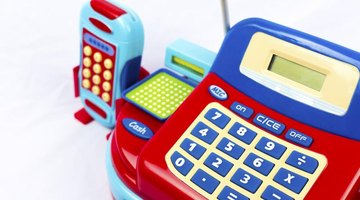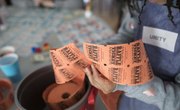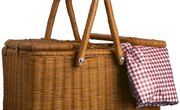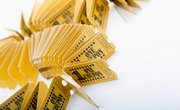Real or play cash registers are helpful tools for teaching children skills such as sorting, counting, adding and subtracting. Cash register games can be used during math time or even during free play. Games with cash registers help bridge school skills with skills used in the real world.
Sorting Game
Introduce a sorting game with the cash register to familiarize kids with money and the cash register in general. This type of game works well with early elementary age students in grades K through 2. Give the students a pile of play money and have them sort the bills and coins into the appropriate compartments. They will notice the subtle differences on the bills and coins to correctly identify them. They will also learn to place the bills and coins in order, from the greatest value to the least value.
Adding and Subtracting Games
Challenge older elementary students -- such as those in Grades 3 and 4 -- by presenting various addition and subtraction scenarios. Encourage them to use the cash register to find the answer. For example, provide word problems about shopping such as this one: Bob and Kim went to the supermarket. They bought milk for $4.00, bread for $3.50 and a candy bar for $1.20. Ask the students to pull out the money that Bob and Kim would have to use to pay for these items. They can also practice subtraction by making change. For instance, ask, "How much change would Bob and Kim get back if they used a 10 dollar bill to pay?" Problems should become more difficult in fourth grade, and they should encourage multiplication.
Related Articles
References
Writer Bio
Rachel Pancare taught elementary school for seven years before moving into the K-12 publishing industry. Pancare holds a Master of Science in childhood education from Bank Street College and a Bachelor of Arts in English from Skidmore College.











